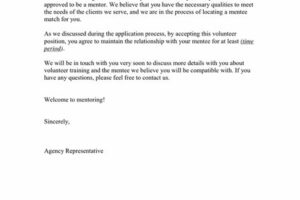Table of Contents
Discover how to volunteer while working full time and make a positive impact on your community. Learn effective time management strategies, find flexible volunteer opportunities, and create a schedule that allows you to give back without compromising your job. Explore tips for balancing work and volunteering, building connections with local organizations, and making a difference in the lives of others. Start volunteering today and experience the fulfillment of giving back, even with a busy schedule.
Are you passionate about making a difference in your community but find it challenging to volunteer due to your full-time job? Don’t worry, you’re not alone. Many individuals face the same dilemma of wanting to give back while juggling the demands of their professional lives. However, with careful planning and a few strategic choices, it is indeed possible to volunteer while working full time. By utilizing your time efficiently, leveraging your skills, and seeking flexible opportunities, you can make a meaningful impact in your community without compromising your career. So, if you’re ready to take on this rewarding challenge, read on to discover how you can balance work and volunteering effortlessly.
Introduction
Volunteering is a noble act that allows individuals to contribute to their communities and make a positive impact on society. However, finding the time to volunteer can be challenging, especially when you have a full-time job. Balancing work responsibilities with volunteering commitments requires careful planning and organization. This article will provide you with practical tips on how to volunteer while working full time, enabling you to fulfill your professional obligations while still making a difference in your community.
Identify Your Passion
Start by identifying causes or organizations that align with your passions and interests. Consider the issues that resonate with you the most, such as education, animal welfare, or environmental conservation. By volunteering for a cause you are passionate about, you will find it easier to commit your time and effort.
Research Volunteer Opportunities
Once you have identified your passion, research various volunteer opportunities related to that cause. Look for flexible programs that allow you to contribute within your available time frame. Many organizations offer weekend projects or evening activities that can accommodate individuals working full time.
Set Goals and Prioritize
Creating a clear set of goals and priorities will help you manage your time effectively. Determine how many hours per week or month you can dedicate to volunteering and stick to that commitment. Plan your schedule in advance, ensuring that your volunteer activities do not interfere with your work responsibilities.
Utilize Your Skills
Consider how you can utilize your professional skills and expertise in your volunteer work. Many organizations require assistance in areas such as marketing, finance, or project management. By offering your skills, you can make a more significant impact while also enhancing your own professional development.
Explore Virtual Volunteering Opportunities
With the rise of remote work, virtual volunteering has become an increasingly popular option. Look for opportunities that allow you to contribute online or from home. This flexibility eliminates the need to commute, making it easier to fit volunteering into your busy schedule.
Coordinate with Your Employer
Some companies have corporate social responsibility programs or policies that support employee volunteering. Speak to your employer about the possibility of getting involved in volunteer initiatives during work hours. By coordinating with your employer, you can find opportunities that align with your professional commitments.
Join Employee Resource Groups
Many workplaces have employee resource groups dedicated to community service and volunteerism. Joining these groups allows you to connect with like-minded colleagues and participate in organized volunteer activities. This collaboration creates a supportive environment for balancing work and volunteering.
Consider Micro-Volunteering
If you struggle to find large chunks of time for volunteering, consider micro-volunteering. Micro-volunteering involves contributing small tasks or projects that can be completed in a short amount of time. This flexible approach allows you to make a difference during your lunch break or while waiting for a meeting to start.
Practice Self-Care
Lastly, it is crucial to prioritize self-care when juggling a full-time job and volunteering. Take care of your physical and mental well-being by getting enough rest, exercising regularly, and maintaining a healthy work-life balance. By taking care of yourself, you will be better equipped to handle your professional responsibilities and make a positive impact through volunteering.
Conclusion
Volunteering while working full time requires careful planning, time management, and a genuine passion for making a difference. By following these tips, you can successfully contribute to your community while maintaining your professional commitments. Remember that even small acts of volunteering can create a significant impact, so do not underestimate the power of your efforts.
Finding the Right Volunteer Opportunity
When working full-time, it is essential to find the right volunteer opportunity that aligns with your interests, skills, and available time. Start by identifying organizations or causes that resonate with your values and passions. Consider any specific skills or expertise you possess that could be beneficial to a non-profit organization or cause. It is also crucial to assess how much time you can realistically commit to volunteering and choose opportunities that can accommodate your schedule.
Utilizing Your Skills and Expertise
To maximize the impact of your volunteer work, leverage your professional knowledge and expertise in a specific area. Determine how your skills can benefit a non-profit organization or cause. Whether it’s providing consulting services, event planning, graphic design, or mentoring, utilizing your skills can make a meaningful difference in your volunteer efforts while also enhancing your own professional development.
Time Management Strategies
Effective time management is key to balancing a full-time job with volunteering. Prioritize your tasks and responsibilities, and create a schedule that includes specific time slots for volunteering. Communicate your availability and limitations to the organization you are volunteering for, ensuring that both parties understand and respect the commitment. Implement productivity techniques, such as time blocking or batching similar tasks together, to make the most efficient use of your time.
Volunteering During Lunch Breaks or Weekends
To volunteer while working full-time, take advantage of your lunch breaks or weekends. Look for opportunities that can be done remotely or in nearby locations during these time slots. Explore virtual volunteering options or contact non-profit organizations to inquire about short-term projects or events that align with your availability outside of regular working hours.
Negotiating Flexibility with Your Employer
If possible, negotiate flexibility with your employer to create time for volunteering. Research your company’s policies on volunteer time off (VTO) and discuss the option of adjusting your work schedule or utilizing flexible work arrangements like telecommuting or compressed workweeks. Frame your volunteer work as an opportunity to enhance your skills and contribute to your personal growth, highlighting how it can also benefit your performance at work.
Seeking Support from Colleagues
Engage your colleagues and seek their support to create a positive volunteering experience. Share your commitment to volunteering with your coworkers and educate them about the organization or cause you are passionate about. If feasible, coordinate volunteer activities with your colleagues to enhance team bonding and foster a sense of collective impact. Explore the possibility of organizing fundraisers or donation drives within your workplace to further involve your colleagues in giving back.
Volunteering as part of Team-Building Activities
Take advantage of team-building activities organized by your workplace that incorporate volunteering. Many companies offer community service initiatives or charity events that encourage employees to volunteer together. Participating in these activities not only allows you to give back to the community but also strengthens working relationships with your colleagues. Engaging in team-building volunteer activities can boost employee morale and job satisfaction.
Prioritizing Self-Care
It is crucial to prioritize self-care when volunteering while working full-time. Maintain a healthy work-life balance and avoid overcommitting yourself. Engage in self-care activities such as exercising, relaxing, and spending time with loved ones. Remember that while volunteering is an opportunity to make a positive impact, it should not come at the expense of your own well-being.
Volunteering is a noble endeavor that allows individuals to make a positive impact in their communities and beyond. However, finding the time to volunteer while working full time can be a challenge. It requires careful planning and dedication to ensure that both work responsibilities and volunteer commitments are fulfilled effectively. Here are some valuable points to consider when it comes to volunteering while working full time:
Set clear goals: Begin by establishing clear goals for your volunteering efforts. Determine the causes or organizations you are passionate about and identify the specific skills or expertise you can offer. This will help you narrow down your options and find opportunities that align with your interests and capabilities.
Create a schedule: Time management is crucial when juggling work and volunteering. Assess your work schedule and determine how much time you can realistically allocate to volunteering. Once you have a clear idea of your availability, communicate it to the organization you wish to volunteer for. This will ensure that they can plan and assign tasks accordingly.
Consider remote or flexible volunteering options: Look for volunteering opportunities that offer flexibility, such as remote or virtual roles. Many organizations now provide opportunities to contribute remotely, allowing you to volunteer from the comfort of your own home or during your free time. This can be an ideal solution for those with demanding work schedules.
Utilize your skills: Identify ways in which you can leverage your professional skills and expertise to benefit the organization you are volunteering for. This not only allows you to make a meaningful contribution but also enhances your own professional development. For example, if you have marketing skills, you could help design promotional materials or create social media campaigns for the organization.
Communicate with your employer: Inform your employer about your desire to volunteer and discuss potential options for accommodating your volunteering commitments. Some companies have corporate social responsibility programs or policies that support employee volunteering. By having an open dialogue with your employer, you may be able to find a mutually beneficial solution.
Seek shorter-term or project-based opportunities: If committing to long-term volunteering positions seems challenging, consider seeking shorter-term or project-based opportunities. These allow you to contribute effectively without overwhelming your work schedule. One-time events or weekend projects are great options for those with limited availability during weekdays.
Practice self-care: Balancing work and volunteering can be demanding, so it’s important to prioritize self-care. Ensure that you have sufficient rest, exercise, and leisure time to avoid burnout. Taking care of your own well-being will enable you to continue making a positive impact in the long run.
Remember, volunteering while working full time requires commitment and dedication. By setting clear goals, managing your time effectively, and finding flexible opportunities, you can successfully contribute to your community while maintaining a fulfilling career.
Thank you for taking the time to read our blog on how to volunteer while working full time. We understand that juggling work commitments and finding time to give back to the community can be challenging, but we believe that it is possible to make a difference no matter how busy your schedule may be.
First and foremost, it is important to prioritize your time and set realistic goals. Assess how much time you can realistically commit to volunteering without compromising your work or personal life. It may be helpful to create a schedule or calendar to ensure that you allocate specific time slots for volunteering activities.
Furthermore, consider seeking out flexible volunteering opportunities that can accommodate your busy schedule. Many organizations now offer remote or virtual volunteering options, allowing you to contribute from the comfort of your own home or during your lunch break. This could include tasks such as writing articles, providing online mentoring, or participating in virtual fundraising events.
Additionally, make use of your workplace’s policies and programs that support employee volunteering. Many companies encourage their employees to engage in community service by offering paid volunteer days or organizing company-wide volunteering events. Take advantage of these opportunities to make an impact while still fulfilling your work responsibilities.
In conclusion, while it may seem challenging to volunteer while working full time, it is definitely possible with proper planning and prioritization. By setting realistic goals, seeking out flexible volunteer opportunities, and leveraging your workplace’s support, you can make a difference in your community and contribute to causes that are important to you. Remember, even small acts of kindness can have a significant impact, so don’t underestimate the power of volunteering, no matter how limited your time may be.
We hope that this blog has provided you with valuable insights and practical tips on how to incorporate volunteering into your busy schedule. Thank you once again for visiting our blog, and we encourage you to share your experiences and any additional tips you may have in the comments section. Together, let’s make a positive change in the world!
.
People also ask about how to volunteer while working full time:
1. How can I find time to volunteer while working a full-time job?
Finding time to volunteer while working full time can be challenging, but it’s not impossible. Here are a few strategies you can consider:
- Look for flexible volunteering opportunities that allow you to contribute during evenings or weekends.
- Consider volunteering during your lunch breaks or before/after work hours.
- Discuss your interest in volunteering with your employer to explore potential options such as paid time off for community service.
- Organize your schedule efficiently by prioritizing your commitments and eliminating non-essential activities.
- Involve your colleagues or friends in volunteering activities to make it a group effort and share responsibilities.
2. What types of volunteer work can I do with a full-time job?
There are various types of volunteer work you can engage in while working full time:
- Virtual volunteering: Look for remote opportunities that allow you to contribute online or over the phone at your convenience.
- Weekend projects: Participate in one-time events or projects that take place on weekends, such as habitat restoration, community clean-ups, or fundraising events.
- Mentoring programs: Offer your expertise and guidance by becoming a mentor to someone in need. Many mentoring programs offer flexible scheduling options.
- Skills-based volunteering: Utilize your professional skills to support nonprofits or community organizations in areas such as marketing, finance, IT, or graphic design.
3. How can I manage my energy and avoid burnout when volunteering alongside a full-time job?
Volunteering alongside a full-time job requires proper energy management to avoid burnout. Here are some tips:
- Set realistic expectations: Be mindful of your time constraints and commit to a manageable volunteering schedule.
- Prioritize self-care: Take care of your physical and mental well-being by getting enough rest, eating nutritious meals, and engaging in activities that help you relax.
- Communicate your boundaries: Clearly communicate your availability and limitations to the organizations you volunteer for, ensuring they understand your need to balance work and volunteering commitments.
- Delegate tasks: When possible, delegate tasks or share responsibilities with other volunteers to distribute the workload and prevent overwhelming yourself.
- Celebrate small victories: Recognize and celebrate the impact you’re making through your volunteering efforts, even if it’s on a smaller scale due to time constraints.
Remember, volunteering is about making a positive difference, so finding a balance that works for you is key.






